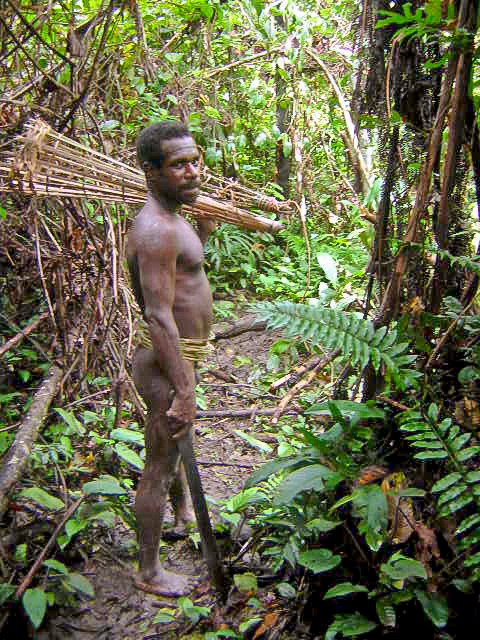|
Umar Language
Yeretuar, also called Umar or Goni, is an Eastern Malayo-Polynesian language in its putative Cenderawasih languages branch, originating from Cenderawasih Bay (Geelvink Bay) in West Papua Province of Western New Guinea, northeastern Indonesia Indonesia, officially the Republic of Indonesia, is a country in Southeast Asia and Oceania, between the Indian Ocean, Indian and Pacific Ocean, Pacific oceans. Comprising over List of islands of Indonesia, 17,000 islands, including Sumatra, .... References * Kamholz, DavidUmar dictionary South Halmahera–West New Guinea languages Languages of Western New Guinea Cenderawasih Bay {{austronesian-lang-stub ... [...More Info...] [...Related Items...] OR: [Wikipedia] [Google] [Baidu] |
West Papua (region)
Western New Guinea, also known as Papua, Indonesian New Guinea, and Indonesian Papua, is the western half of the island of New Guinea, formerly Dutch and granted to Indonesia in 1962. Given the island is alternatively named Papua, the region is also called West Papua (). It is one of the seven geographical units of Indonesia in ISO 3166-2:ID. Lying to the west of Papua New Guinea and geographically a part of the Australian continent, the territory is almost entirely in the Southern Hemisphere and includes the Biak and Raja Ampat archipelagoes. The region is predominantly covered with rainforest where traditional peoples live, including the Dani of the Baliem Valley. A large proportion of the population live in or near coastal areas. The largest city is Jayapura. The island of New Guinea has been populated for tens of thousands of years. European traders began frequenting the region around the late 16th century due to spice trade. In the end, the Dutch Empire emerge ... [...More Info...] [...Related Items...] OR: [Wikipedia] [Google] [Baidu] |
Indonesia
Indonesia, officially the Republic of Indonesia, is a country in Southeast Asia and Oceania, between the Indian Ocean, Indian and Pacific Ocean, Pacific oceans. Comprising over List of islands of Indonesia, 17,000 islands, including Sumatra, Java, Sulawesi, and parts of Borneo and New Guinea, Indonesia is the world's largest archipelagic state and the List of countries and dependencies by area, 14th-largest country by area, at . With over 280 million people, Indonesia is the world's List of countries and dependencies by population, fourth-most-populous country and the most populous Islam by country, Muslim-majority country. Java, the world's List of islands by population, most populous island, is home to more than half of the country's population. Indonesia operates as a Presidential system, presidential republic with an elected People's Consultative Assembly, legislature and consists of Provinces of Indonesia, 38 provinces, nine of which have Autonomous administrative divisi ... [...More Info...] [...Related Items...] OR: [Wikipedia] [Google] [Baidu] |
Malayo-Polynesian Languages
The Malayo-Polynesian languages are a subgroup of the Austronesian languages, with approximately 385.5 million speakers. The Malayo-Polynesian languages are spoken by the Austronesian peoples outside of Taiwan, in the island nations of Southeast Asia (Indonesia and the Philippine Archipelago) and the Pacific Ocean, with a smaller number in continental Asia in the areas near the Malay Peninsula, with Cambodia, Vietnam and the Chinese island Hainan as the northwest geographic outlier. Malagasy, spoken on the island of Madagascar off the eastern coast of Africa in the Indian Ocean, is the furthest western outlier. Many languages of the Malayo-Polynesian family in insular Southeast Asia show the strong influence of Sanskrit, Tamil and Arabic, as the western part of the region has been a stronghold of Hinduism, Buddhism, and, later, Islam Islam is an Abrahamic religions, Abrahamic monotheistic religion based on the Quran, and the teachings of Muhammad. Adherents of I ... [...More Info...] [...Related Items...] OR: [Wikipedia] [Google] [Baidu] |
Central–Eastern Malayo-Polynesian Languages
The Central–Eastern Malayo-Polynesian (CEMP) languages form a proposed branch of the Malayo-Polynesian languages consisting of over 700 languages (Blust 1993). Distribution The Central Malayo-Polynesian languages are spoken in the Lesser Sunda and Maluku Islands of the Banda Sea, in an area corresponding closely to the Indonesian provinces of East Nusa Tenggara and Maluku and the nation of East Timor (excepting the Papuan languages The Papuan languages are the non- Austronesian languages spoken on the western Pacific island of New Guinea, as well as neighbouring islands in Indonesia, Solomon Islands, and East Timor. It is a strictly geographical grouping, and does not imply ... of Timor and nearby islands), but with the Bima language extending to the eastern half of Sumbawa Island in the province of West Nusa Tenggara and the Sula languages of the Sula Islands in the southwest corner of the province of North Maluku. The principal islands in this region are Sumbaw ... [...More Info...] [...Related Items...] OR: [Wikipedia] [Google] [Baidu] |
Eastern Malayo-Polynesian Languages
Eastern or Easterns may refer to: Transportation Airlines *China Eastern Airlines, a current Chinese airline based in Shanghai * Eastern Air, former name of Zambia Skyways * Eastern Air Lines, a defunct American airline that operated from 1926 to 1991 * Eastern Air Lines (2015), an American airline that began operations in 2015 * Eastern Airlines, LLC, previously Dynamic International Airways, a U.S. airline founded in 2010 * Eastern Airways, an English/British regional airline * Eastern Provincial Airways, a defunct Canadian airline that operated from 1949 to 1986 Roads * Eastern Avenue (other), various roads * Eastern Parkway (other), various parkways * Eastern Freeway, Melbourne, Australia * Eastern Freeway Mumbai, Mumbai, India Other * Eastern Railway (other), various railroads *, a cargo liner in service 1946-65 Education * Eastern University (other) * Eastern College (other) Sports * Easterns (cricket team), South ... [...More Info...] [...Related Items...] OR: [Wikipedia] [Google] [Baidu] |
South Halmahera–West New Guinea Languages
The South Halmahera–West New Guinea (SHWNG) languages are a branch of the Malayo-Polynesian languages, found in the islands and along the shores of the Halmahera Sea in the Indonesian province of North Maluku and of Cenderawasih Bay in the provinces of Papua and West Papua. There are 38 languages. The unity of the South Halmahera–West New Guinea subgroup is well supported by lexical and phonological evidence. Blust (1978) has proposed that they are most closely related to the Oceanic languages, but this classification is not universally accepted. Most of the languages are only known from short word lists, but Buli, Patani and Taba on Halmahera, Ambel on Raja Ampat, and Biak, Wamesa, Wooi, and Waropen in Cenderawasih Bay, are fairly well attested. Classification Traditionally, the languages are classified into two geographic groups: * South Halmahera languages (along the southeastern coast of Halmahera, plus one language in the east of the Bomberai Peninsula). ... [...More Info...] [...Related Items...] OR: [Wikipedia] [Google] [Baidu] |
Cenderawasih Languages
The Cenderawasih languages, also known as Nuclear Cenderawasih Bay languages and approximately synonymous with West New Guinea languages, are a branch of Austronesian languages of Indonesia, found in the islands and shoreline of Cenderawasih Bay in the provinces of West Papua, Central Papua and Papua. Most of the languages are only known from short word lists, but Biak, Wamesa, and Wooi are fairly well attested. Historical morphology Reconstructions of subject markers and inalienable possessive markers for Cenderawasih Bay proto-languages according to Kamholz (2015). Note that V = vocalic conjugation, C = consonantal conjugation: Proto-Cenderawasih Bay: : : Proto-Biakic: : : Proto-Southwest Cenderawasih Bay: : : Proto-Yaur-Yerisiam: : : Languages From Kamholz (2024): *Nuclear Cenderawasih Bay **Biakic *** Biak (Numfor) *** Dusner *** Meoswar *** Roon ** Yapen (see more) **Southwest Cenderawasih Bay *** Umar ***Yaur-Yerisiam **** Yaur **** Yerisiam Further r ... [...More Info...] [...Related Items...] OR: [Wikipedia] [Google] [Baidu] |
Cenderawasih Bay
Cenderawasih Bay (, "Bird of Paradise Bay"), also known as Sarera Bay () and formerly Geelvink Bay (), is a large bay in northern Province of Papua, Central Papua and West Papua, New Guinea, Indonesia. Geography ''Cenderawasih Bay'' is a large bay to the northwest of the Indonesian province of Papua, north of the province of Central Papua, and east of the province of West Papua, between the Bird's Head Peninsula and the mouth of the Mamberamo River. The bay is more than 300 kilometers wide. The coastline from Manokwari, in the northwest of the bay, to Cape d'Urville at the mouth of the Mamberamo is more than 700 kilometers long. To the south, the Wandammen Peninsula heads north into the bay. Important places along the coast are Manokwari, Ransiki, Wasior and Nabire. The Wamma River, Tabai River, Warenai River, and Wapoga River empty into the Bay. History The Dutch name of the bay was after the frigate ''De Geelvink'' with which Jacob Weyland sailed through t ... [...More Info...] [...Related Items...] OR: [Wikipedia] [Google] [Baidu] |
West Papua Province
West Papua (), formerly Irian Jaya Barat (West Irian), is an Indonesian Provinces of Indonesia, province located in Indonesia Western New Guinea, Papua. It covers most of the two western peninsulas of the island of New Guinea: the eastern half of the Bird's Head Peninsula (or Doberai Peninsula) and the whole of the Bomberai Peninsula, along with nearby smaller islands. The province is bordered to the north by the Pacific Ocean, to the west by Southwest Papua Province, the Halmahera Sea and the Ceram Sea, to the south by the Banda Sea, and to the east by the province of Central Papua and the Cenderawasih Bay. Manokwari is the province's capital and largest city. With an estimated population of 578,700 in mid-2024 (comprising 304,140 males and 274,560 females), West Papua is the second-least-populous province in Indonesia after South Papua, following the separation off in December 2022 of the western half of the Bird's Head Peninsula to create the new province of Southwest Papua, ... [...More Info...] [...Related Items...] OR: [Wikipedia] [Google] [Baidu] |
Western New Guinea
Western New Guinea, also known as Papua, Indonesian New Guinea, and Indonesian Papua, is the western half of the island of New Guinea, formerly Dutch and granted to Indonesia in 1962. Given the island is alternatively named Papua, the region is also called West Papua (). It is one of the seven geographical units of Indonesia in ISO 3166-2:ID. Lying to the west of Papua New Guinea and geographically a part of the Australian continent, the territory is almost entirely in the Southern Hemisphere and includes the Biak and Raja Ampat archipelagoes. The region is predominantly covered with rainforest where traditional peoples live, including the Dani of the Baliem Valley. A large proportion of the population live in or near coastal areas. The largest city is Jayapura. The island of New Guinea has been populated for tens of thousands of years. European traders began frequenting the region around the late 16th century due to spice trade. In the end, the Dutch Empire emerged ... [...More Info...] [...Related Items...] OR: [Wikipedia] [Google] [Baidu] |
Languages Of Western New Guinea
Language is a structured system of communication that consists of grammar and vocabulary. It is the primary means by which humans convey meaning, both in spoken and signed forms, and may also be conveyed through writing. Human language is characterized by its cultural and historical diversity, with significant variations observed between cultures and across time. Human languages possess the properties of productivity and displacement, which enable the creation of an infinite number of sentences, and the ability to refer to objects, events, and ideas that are not immediately present in the discourse. The use of human language relies on social convention and is acquired through learning. Estimates of the number of human languages in the world vary between and . Precise estimates depend on an arbitrary distinction (dichotomy) established between languages and dialects. Natural languages are spoken, signed, or both; however, any language can be encoded into secondary media usi ... [...More Info...] [...Related Items...] OR: [Wikipedia] [Google] [Baidu] |




